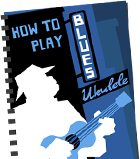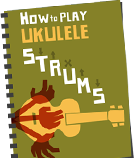Good to see some non-English speaking ukulele blogs cropping up. YOUkulele is and Italian language blog. And, Uke Hunt buddy, George Stone has started a Spanish ukulele blog which includes an interview with a handsome man. I don’t speak any German or know who the photos are but I enjoyed this video anyway.
If you’ve left your Christmas duties late, grab yourself some downloadable ukulele gift tags; make a papercraft ukulele and learn some 3 chord Christmas songs. Plus ukestuff has a good rundown of Christmas songbooks.
Jake Shimabukuro has a new job: selling car insurance. Oh yes.
100 years of Hawaiian music (thanks to @HermanVDC).
As much as it would undermine my hard-man image, I definitely want this coin purse.
I don’t condone theft but I can understand stealing a ukulele. But to steal ukuleles headed for tsunami victims?
I’ve seen some spellings in my time but this one takes the biskit (thanks to Karl).
If you The Mad Tea Party’s track on the podcast, they’re entering into the Christmas spirit and giving away another new one this year Effin Christmastime



